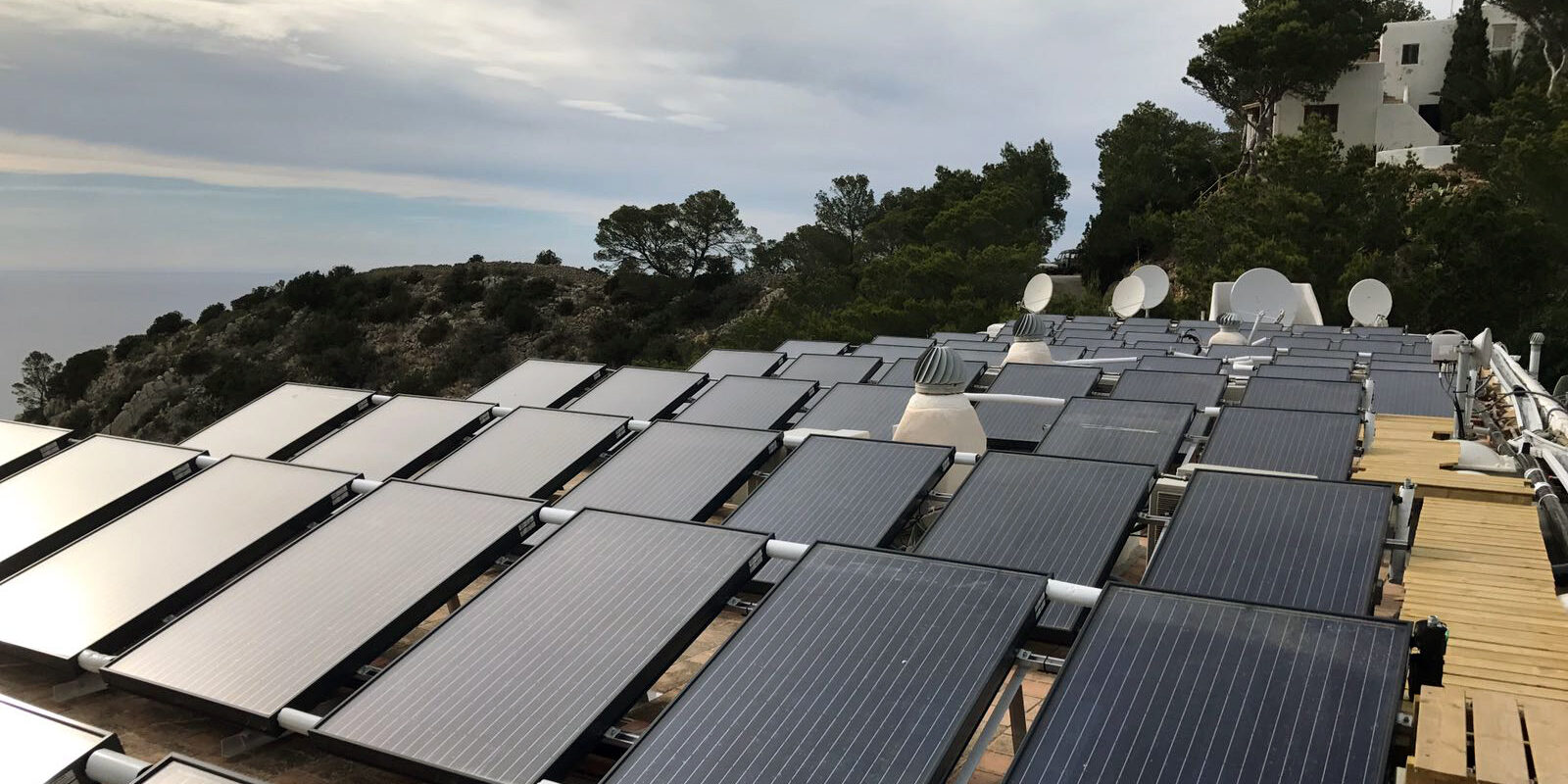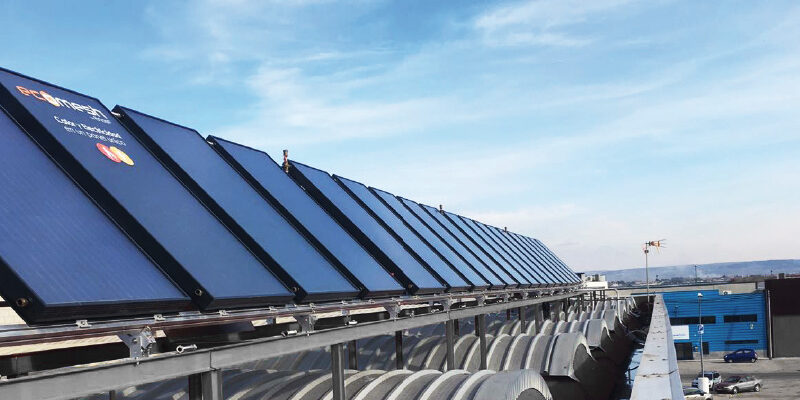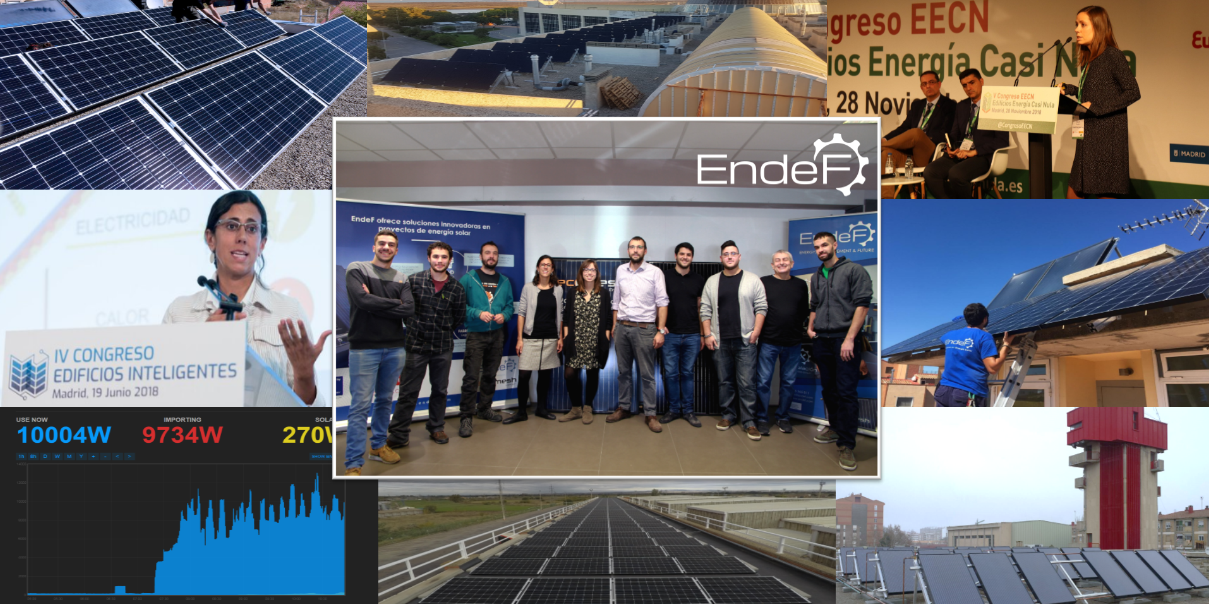Today we come back with a new entry of “Solar Energy for Beginners” where we will talk about hybrid solar panels for some, and mixed panels for others. If this is your first time hearing any of these terms, don’t worry; there are still people who have been in the solar energy sector and within the renewable energy sector for a long time and who, till this day, do not know it.
Do you want to know more about the innovative hybrid solar panels? Do not miss then everything we have to tell you below.
What is a Hybrid Solar Panel?
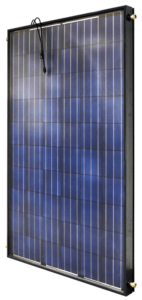
A hybrid solar panel is the combination of thermal and photovoltaic technologies in a single module; In front of the photovoltaic and thermal panels that, conventionally, are installed separately, emerges the hybrid solar panel, capable of simultaneously generating electricity and heat. This is due to the ability of the hybrid solar panel to be able to take advantage of the entire spectrum of existing light, unlike photovoltaic and thermal panels, which capture ultraviolet and infrared light respectively. Photovoltaic solar energy and thermal solar energy are used at the same time.
Although it is an existing product since the 70s, it has not been until now when this technology has begun to be installed in more and more places. Its versatility, its high degree of innovation and the multiple advantages that hybrid solar panels have compared to conventional technology have made this type of solar panels increasingly in demand in all types of sectors and for all kinds of locations.
Electricity, sanitary hot water and even heating if the system allows it (ideally underfloor heating and low-temperature emitters) in a single panel. Sounds interesting, don’t you think?
What types of hybrid solar panels are there?
Throughout these years, the market for hybrid solar panels has been evolving and bringing new models available depending on the technology they have been incorporating. In this way, at EndeF we began to use our own terminology to designate these models, classifying them by “generations”; This terminology, today, is the most widespread in the sector.
The jump from one “generation” to another is marked according to the insulation degree that the panel itself has and the covers it incorporates. We can differentiate between:
– 0 Generation Hybrid Solar Panels (PVT-0)
It is the primary and most basic model on the market for hybrid solar panels; the first hybrid solar panel created. This panel is simply composed of photovoltaic cells, a heat absorber and a junction box for electrical wiring. It does not have insulation on either side, so the temperature it can reach is much lower.
Given these characteristics, the location where these panels are usually installed are swimming pools since water is required at a lower temperature than, for example, in a home.
– First Generation Hybrid Solar Panels (PVT-1)
In this panel, a rear cover is added to the junction of the photovoltaic laminate and the thermal collector whose function is to conserve heat, thus preventing it from being lost through the rear of the panel.
The cover only at the rear makes that, among other things, the photovoltaic laminate is not so hot, thus enhancing the electrical part of the panel. These panels work at a lower temperature than hybrid models with a front cover, being ideal for hot places and, especially, the locations where what is intended to be enhanced is the photovoltaic part.
It is currently the most widely sold hybrid solar panel in the world.
– Second Generation Hybrid Solar Panels (PVT-2)
The main feature of these panels is the incorporation of a transparent front cover. With this, it is possible to alleviate what for some is the main drawback of hybrid solar panels from previous generations: heat loss through the front face.
Thus, by isolating the panel itself on both sides, an even greater decrease in heat losses is achieved and, therefore, a considerable increase in the thermal performance of the panel. By reducing both heat losses, this panel is postulated as ideal for places with a cold climate and, above all, where what is intended is to enhance thermal production.
Given this, the same question always arises: How to decide between one model or another?
Very simple:
- If you want to install in a hot place and/or you intend to enhance the electrical part: 1st generation hybrid solar panel.
- If you want to install in a cold place and/or intend to enhance the thermal part: 2nd generation hybrid solar panel.
Hybrid Solar Panel ECOMESH
At EndeF we are aware of the need to innovate that the solar energy sector requires of us and that is why we work on this line 24/7. With R&D as the hallmark and our hybrid solar panel ECOMESH as the flagship, at EndeF we know that the constant improvement and adaptation of these panels is very important for their subsequent (and now, real) implementation.
Do you want to know more about the most efficient solar panel on the market? ¡Meet ECOMESH!
CTA Technology
The inclusion of CTA technology (Transparent Insulating Cover), patented by EndeF, makes ECOMESH a more efficient hybrid solar panel than those already on the market. This technology encourages panel performance to increase in two ways. Regarding the photovoltaic part, the fact that the water circulates inside the panel makes the photovoltaic cells cool so that, when working at a lower temperature, the electricity generated is greater. Regarding thermal production, the CTA technology and the inert gas that it incorporates improve the efficiency of the panel.
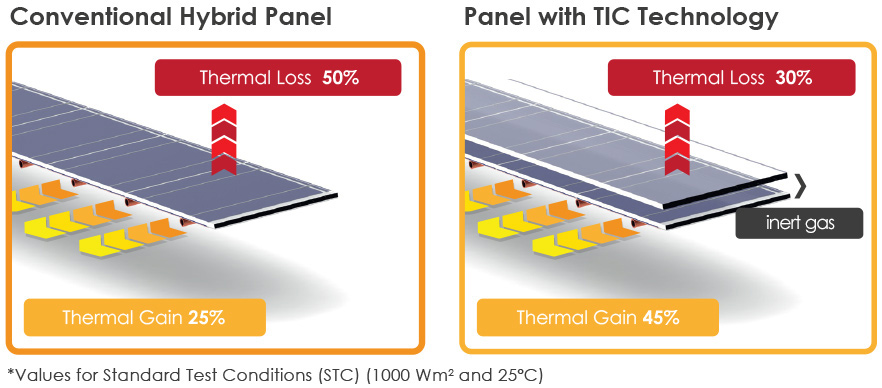
Characteristics of the Hybrid Solar Panels ECOMESH
The ECOMESH hybrid solar panel has substantial advantages that make it a really interesting product, especially for those locations where space on the roof is limited. It is because the collection surface necessary to generate the same energy as separate photovoltaic and thermal panels is reduced by 40%.
In addition, due to the greater efficiency that CTA technology provides, thermal production is three times higher than what first-generation hybrid plates can generate at high temperatures.
Regarding the photovoltaic part, in the same way, in warm places the production of electricity can be up to 15% more than that achieved by conventional photovoltaic solar panels.
Developed and manufactured in Zaragoza (Spain), the ECOMESH hybrid solar panel, by combining the two technologies in a single module, guarantees the best results per unit area.
Where is it possible to install a hybrid solar panel?
Although it is true that the installation of hybrid solar panels is ideal in those places where the surface area on the roof is small, any place is a good location for this product. In addition, these facilities receive special interest the greater the demand for domestic hot water (DHW).
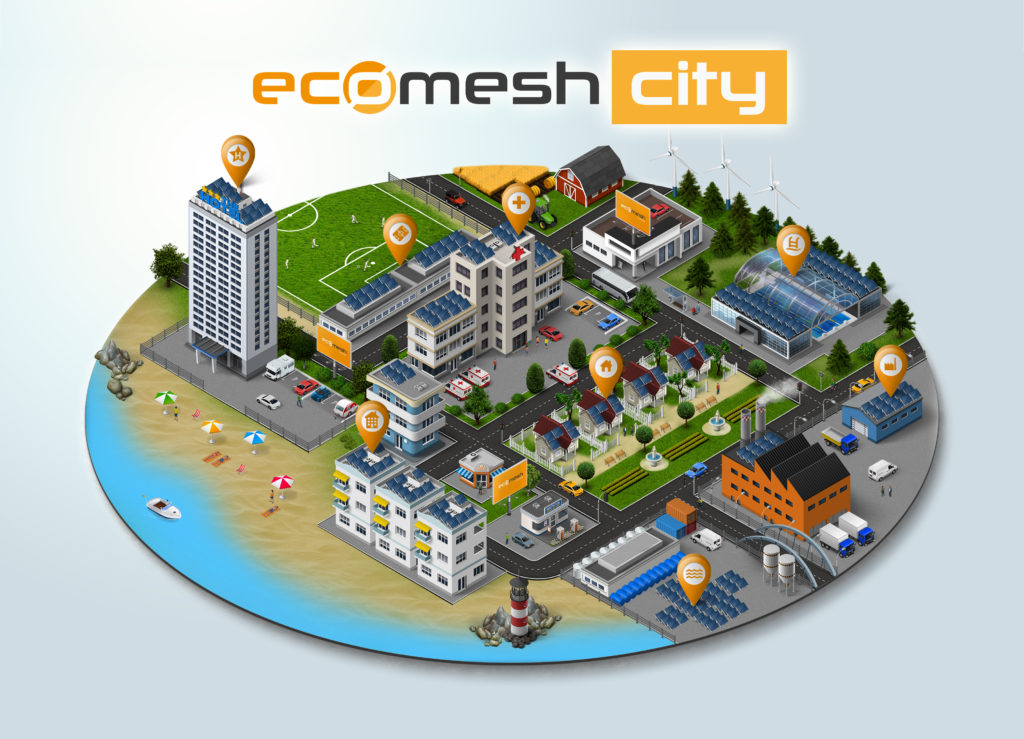
Considering these two circumstances, the most recommended places to install this new technology are:
- Hotels
- Senior residences
- Residential buildings
- Sports centers
- Hospitals and clinics
- Car washes
- Industry
In addition to all of them, and despite the fact that energy consumption is not so high, single-family homes are also presented as a possible scenario for hybrid solar panels.
If you want more details about the possible applications, do not miss all the information about it through the following link in ECOMESH
Some places where ECOMESH hybrid solar panels are already operating
EndeF has carried out different projects in which the presence of the functioning ECOMESH hybrid solar panels is already a reality. Whether we’ve installed them directly or through an approved installer, many places are already enjoying the clean power generation and energy savings (and therefore economical) that this provides.
Here we leave you some images from some of the installations of the second generation hybrid solar panel ECOMESH:ación al respecto a través del siguiente enlace en ECOMESH
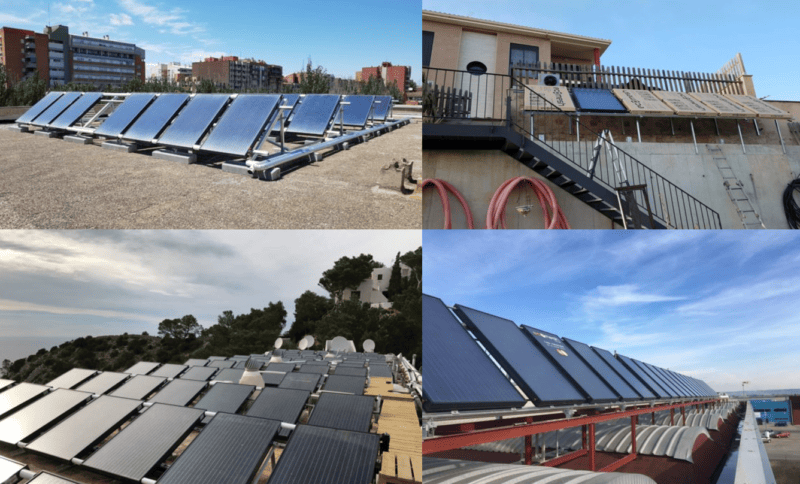
In order, from left to right, the facilities shown here correspond to:
- Parque de Bomberos 1 (Zaragoza), the first hybrid solar installation carried out in Spain in a public building.
- Single-family Home.
- Great luxury hotel in the Balearic Islands.
- EndeF roof.
As you can see, the owners of these and many other installations are already enjoying hybrid solar energy thanks to the ECOMESH solar panels.
The future of the Hybrid Solar Panels
Although, as we already said at the beginning of this entry, the hybrid solar panel is a product that has been existing for many years, the advances that it is having are going at a dizzying pace with the aim of further implementing them in all types of buildings. That is why, beyond the own R&D investment that companies like EndeF carry out year after year, a joint effort is required by all the actors involved in the development of this technology.
That is why, increasingly, different activities and events are organized where hybrid solar panel manufacturers from around the world meet to talk about sensations, experiences and advances that help the sector take off. Among these activities, Task 60 stands out, framed within the “Solar Heating & Cooling Program”, where we have the enormous privilege of participating together with the rest of our colleagues in Europe.
If after reading this entry, you still need more information, EndeF remains at your entire disposal; Our technical department will be happy to assist you and answer any questions you may have.
¡See you soon with a new entry of: “Solar Energy For beginners”!
